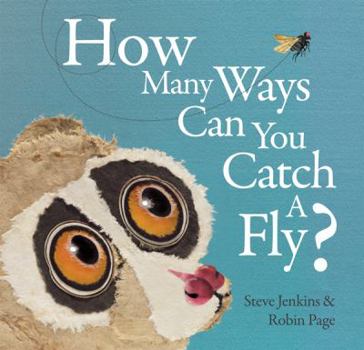How Many Ways Can You Catch a Fly?
Select Format
Select Condition 
Book Overview
Flies are fast! They can hover, walk upside down, and use their lightning-quick reflexes to escape predators.But rainbow trout, slender lorises, and assassin bugs can catch them.Chimney swifts can,... This description may be from another edition of this product.
Format:Hardcover
Language:English
ISBN:061896634X
ISBN13:9780618966349
Release Date:October 2008
Publisher:Houghton Mifflin
Length:32 Pages
Weight:0.05 lbs.
Dimensions:0.5" x 10.3" x 10.0"
Age Range:4 to 7 years
Grade Range:Preschool to Grade 2
Customer Reviews
2 ratings
Insights into how very different creatures harbor similar habits
Published by Thriftbooks.com User , 15 years ago
Steve Jenkins and Robin Page's HOW MANY WAYS CAN YOU CATCH A FLY? provides a fine picture book story of fast creatures and how different creatures can succeed at capturing the same prey. Drawings of birds and animals like offer insights into how very different creatures harbor similar habits.
Great nonfiction choice for young animal lovers.
Published by Thriftbooks.com User , 15 years ago
I'm a fan of Steve Jenkins and Robin Page because I think they do an amazing job of making nonfiction interesting and engaging and presenting fun and interesting facts. I also think they make an effort to keep their content fresh. I always know that when I pick up one of their books that I'm going to learn lots of new information about animals. Needless to say, I wasn't disappointed with their newest book, How Many Ways Can You Catch a Fly?. This book presents a number of challenges animals face along with their unique methods for solving the problem. For example, one challenge is digging holes. Readers are presented with the question, "How many ways can you dig a hole?" When you turn the page, there is a two-page spread showing how different animals dig holes. There is an aardvark making burrows with his front legs and claws, a Mexican burrowing toad digging into mud with its feet, a red rock urchin wearing away rock or coral with its teeth, and more. Other challenges presented in the book include catching flies, snaring fish, hatching eggs, using leaves, and eating clams. At the end of the book, readers can learn even more about each animal featured. Accompanying the fact-filled text are Jenkins' customary colorful paper collage illustrations. I never fail to be amazed at how he captures so many details and facial expressions with the collages. This is a book that I highly recommend to children who are interested in animals, and it would make an excellent cross-curricular resource for science, geography, social studies, and language arts lessons. It may also inspire young readers to come up with creative ways of solving their own problems after seeing how the animals in book do it.




